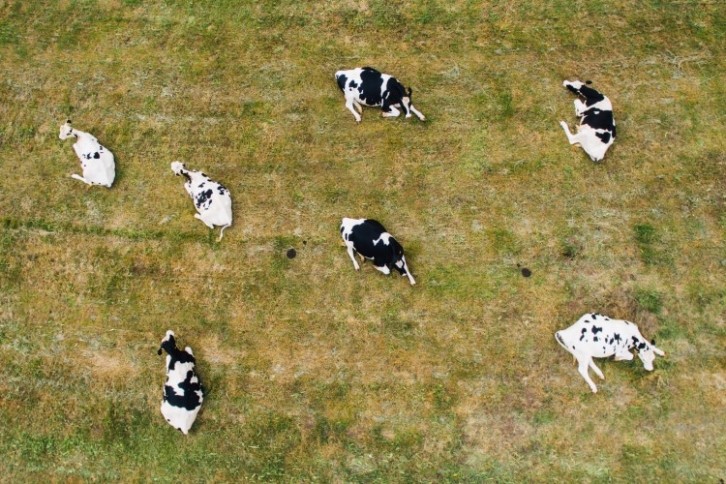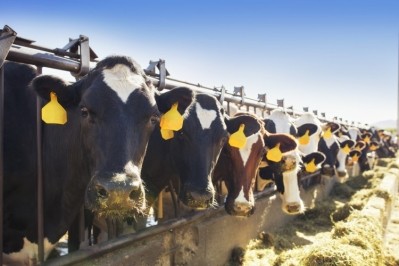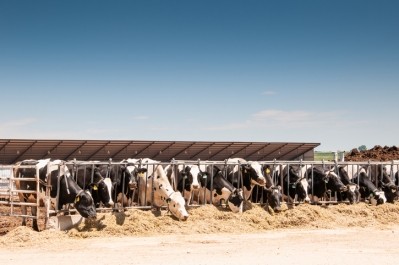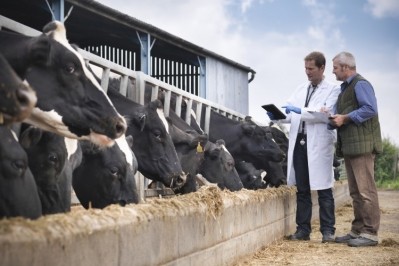Bird flu in cows ‘remarkably unremarkable’ as experts call for calmness

Alex Hamberg, bureau director of the Pennsylvania Department of Agriculture, told dairy industry stakeholders that the virus infecting US dairy cattle is ‘remarkably unremarkable’ and there’s no evidence that it has mutated.
In a conference call organized by the Center for Dairy Excellence, Hamberg relayed a conversation he had with Mia Kim Torchetti, director of the National Veterinary Services Laboratories: “I was speaking with doctor Torchetti earlier today [Wednesday, April 3] about this virus that’s affecting cattle, and in her words, it is remarkably unremarkable.
“So there's no evidence at this point that this has changed in a manner that it's now become mammalian-adapted; it’s still a bird virus.”
Last month, USDA confirmed that a strain of highly pathogenic avian influenza (HPAI) virus was detected in dairy cows in Texas and Kansas. The detections were believed to be the first to affect ruminants and affect older mid-lactation cows, causing them to suddenly dry off or produce thick, colostrum-like milk. The condition isn’t associated with deaths as cows mostly recover with supportive measures in around 12 days, though some do not return to lactation.
Since the first detections in March, further cases have emerged in the past week, including additional cases in Texas and New Mexico, and more recently, in Michigan, Idaho and Ohio. Cows were initially considered ‘dead-end hosts’ – i.e., unlikely to further transmit the virus – but detections on a Michigan farm that had taken in cattle from Texas suggested cow-to-cow transmission could not be ruled out. In addition, a dairy worker believed to have been in close contact with a sick cow tested positive for the virus; the person had eye redness as the only symptoms and is isolating while recovering.
Addressing the recent detections among cows and the rare case in a human, Hamberg suggested these were possible scenarios. “This is still being considered a spillover event,” he explained. “Usually, when we see spillover events, we do have some evidence that there may be transmission between cattle – but in general, the transmission is between animals in that population.
“In this case, cattle tends to be very poor [in spreading]; there’s not a lot of transmission there.
“There isn’t a specific mutation that we can point to and say the virus is now mammalian-adapted. There are known mammalian-adapted mutations out there that we have seen over the years [but] this virus is not showing those yet.”
Consumers will ‘inevitably be worried’
Besides lack of proof of mutations, pasteurization inactivates the virus, making commercial milk supplies safe for consumption. There are also no fears of milk shortage, with just several of herds across all of the US affected by the virus so far.
Nevertheless, dairy brands could benefit from reassuring their consumers, according to Katrina Diamonon, principal analyst at London, UK-based data analytics company GlobalData. “Despite assurances from health authorities, it will be difficult for consumers to detach this concerning news story from their own experiences,” she said. “Many will inevitably be worried about how the spread of this virus may affect the safety of the meat and dairy products they consume.
“There is also residual anxiety and fear following the unprecedented and devastating impacts of the COVID-19 pandemic. Even though there is no definitive proof of how the pandemic started, one prominent theory is that the virus emerged in wild animals and spread to humans at the market. This has naturally served to raise suspicion about the meat supply chain and cause consumers to rethink their choices.”
She said brands can build trust with consumers through clear labeling, certifications and seals as well as traceability and supply chain information. “No brand is immune from food safety scares, but proactive reassurances from brands can help regain consumer trust,” Diamonon concluded.











